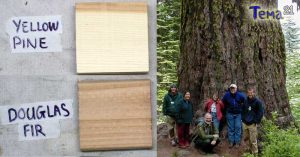Embarking on a woodworking project requires a careful selection of materials. One of the most critical decisions a craftsman, contractor, or DIY enthusiast faces is choosing the right type of wood. The differences between types of wood can significantly impact the result of a project, from its aesthetic appeal to its durability. Today, we explore two popular types of wood in detail: Douglas fir and Pine.
A Quick Glance at Douglas Fir and Pine Lumber, Their Common Uses, and Why the Comparison Matters
Choosing between Douglas fir and pine lumber isn’t merely a matter of preference. Each type of wood comes with its unique set of characteristics and potential applications. Douglas fir, renowned for its strength and hardness, is a favorite in construction projects. On the other hand, Pine is known for its affordability and easy workability, making it suitable for a wide range of crafts and furniture. Understanding these woods is crucial to ensure you make the best choice for your project.
Contents
Wood Species: Douglas Fir vs Pine
The Douglas fir (Pseudotsuga menziesii) is a North American native, predominantly growing in the Pacific Northwest. It’s highly regarded for its strength and straight grain, which makes it excellent for structural applications. Moreover, Douglas fir has a light reddish-brown color, which can add a warm aesthetic to any project.
 Pine is a broad term encompassing several species of coniferous trees. For this comparison, we focus on the Southern Yellow Pine, a species in the southern United States. Southern Yellow Pine is renowned for its high density and strength-to-weight ratio, making it a popular choice for construction. It’s known for its distinct yellowish color and pronounced grain.
Pine is a broad term encompassing several species of coniferous trees. For this comparison, we focus on the Southern Yellow Pine, a species in the southern United States. Southern Yellow Pine is renowned for its high density and strength-to-weight ratio, making it a popular choice for construction. It’s known for its distinct yellowish color and pronounced grain.
Douglas Fir and Pine differ in their geographical origin, appearance, properties, and applications. These differences are summarized in the table below:
| Douglas Fir | Pine (Southern Yellow) |
|---|---|
| Native to the Pacific Northwest | Native to the Southern United States |
| Light reddish-brown color | Distinct yellowish color |
| High strength and hardness | High density and strength-to-weight ratio |
| Commonly used in structural applications | Used in a variety of projects, including construction and furniture |
Understanding these differences is the first step in making an informed decision about the best wood for your project. In the following sections, we’ll delve deeper into these woods’ characteristics, exploring their durability, common uses, cost, and more.
Durability and Resistance
 Douglas Fir is renowned for its superior strength and durability. Its dense grain structure translates into high dimensional stability, meaning it resists warping under changing environmental conditions. Moreover, Douglas fir has a decent resistance to rot, especially when properly treated and maintained. However, it’s important to note that Douglas fir’s rot resistance is lower than that of some species like cedar or redwood. Proper sealing with a high-quality wood seal can significantly improve its resistance to moisture, thus preventing rot and prolonging the wood’s lifespan.
Douglas Fir is renowned for its superior strength and durability. Its dense grain structure translates into high dimensional stability, meaning it resists warping under changing environmental conditions. Moreover, Douglas fir has a decent resistance to rot, especially when properly treated and maintained. However, it’s important to note that Douglas fir’s rot resistance is lower than that of some species like cedar or redwood. Proper sealing with a high-quality wood seal can significantly improve its resistance to moisture, thus preventing rot and prolonging the wood’s lifespan.
Southern Yellow Pine offers remarkable strength and stiffness for its cost. However, its resistance to rot and insects is lower than some hardwoods or specially treated softwoods. Left untreated, Southern Yellow Pine can quickly succumb to rot and insect damage when exposed to the elements. It’s, therefore, crucial to apply a preservative treatment if the wood is used in an outdoor setting or in any environment where moisture could be a factor.
Let’s examine how Douglas Fir and Pine (Southern Yellow Pine) stand up against each other in terms of durability and resistance to rot and insects:
| Douglas Fir | Pine (Southern Yellow) | |
|---|---|---|
| Durability | High dimensional stability, resists warping | Good strength and stiffness, but less rot resistant |
| Resistance to Rot | Moderate, improves with proper treatment | Lower requires preservative treatment for outdoor use |
| Resistance to Insects | Decent, improves with proper treatment | Lower, requires preservative treatment |
Understanding each wood type’s durability and resistance properties is crucial when considering their application in different environments. Douglas Fir and Pine can serve well in various settings, provided they are properly maintained and treated as necessary.
Uses of Douglas Fir and Pine
Douglas Fir is highly valued in furniture making for its strength, durability, and beautiful grain, making it an ideal material for creating robust and aesthetically pleasing pieces. Its high dimensional stability ensures that the furniture maintains its shape over time.
Regarding outdoor projects, Douglas Fir is a popular choice for decks, patios, and garden beds due to its inherent strength and moderate resistance to rot. Proper treatment can significantly enhance its longevity in these applications.
 Pine, particularly Southern Yellow Pine, is a versatile wood that finds use in various applications. In furniture making, it’s appreciated for its light color, distinctive grain, and ease of staining. Pine’s affordability also makes it an attractive choice for large furniture pieces.
Pine, particularly Southern Yellow Pine, is a versatile wood that finds use in various applications. In furniture making, it’s appreciated for its light color, distinctive grain, and ease of staining. Pine’s affordability also makes it an attractive choice for large furniture pieces.
Southern Yellow Pine is a common choice for outdoor projects, especially for decks and framing structures. It’s essential, however, to apply preservative treatments to enhance the wood’s resistance to outdoor elements.
Comparing the usage of Douglas Fir and Pine (Southern Yellow Pine) in different projects, we find:
| Douglas Fir | Pine (Southern Yellow) | |
|---|---|---|
| Furniture | Excellent for robust, durable furniture | Good for light-colored, easily stained furniture |
| Outdoor Projects | Great for decks, patios, with proper treatment | Common for decks, framing, needs treatment for outdoor use |
| Raised Garden Beds | Suitable with proper sealing | Less preferred due to lower rot resistance |
Selecting between Douglas Fir and Pine for a project depends on the project’s specific needs, such as durability, aesthetics, cost, and the intended use of the final product. Both kinds of wood have unique strengths and potential applications, making them versatile materials in woodworking.
Douglas Fir and Pine for Garden Beds
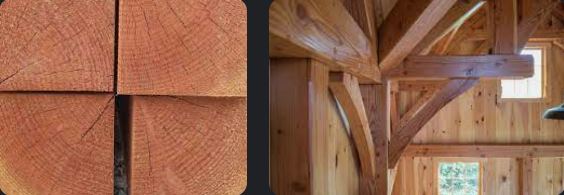 Regarding raised garden beds, Douglas Fir proves to be a viable option due to its respectable strength and moderate resistance to rot. Its stability under changing environmental conditions prevents warping, a beneficial feature for outdoor projects like garden beds. To extend the lifespan of Douglas Fir used for garden beds, a protective sealant is recommended to resist moisture and prevent decay.
Regarding raised garden beds, Douglas Fir proves to be a viable option due to its respectable strength and moderate resistance to rot. Its stability under changing environmental conditions prevents warping, a beneficial feature for outdoor projects like garden beds. To extend the lifespan of Douglas Fir used for garden beds, a protective sealant is recommended to resist moisture and prevent decay.
Pine, particularly Southern Yellow Pine, can also be used for raised garden beds. However, it’s important to note that untreated Pine has a relatively lower resistance to rot compared to Douglas Fir, which could limit its longevity when used outdoors. Treatment with an appropriate sealant can significantly improve Pine’s durability in this context.
Looking at a comparison of Douglas Fir and Pine (Southern Yellow Pine) for raised garden beds and outdoor use, we find:
| Douglas Fir | Pine (Southern Yellow) | |
|---|---|---|
| Rot Resistance | Moderate, improves with treatment | Lower, significantly improves with treatment |
| Strength and Durability | High | Moderate to High |
| Longevity in Outdoor Use | Longer with proper sealing | Shorter, extends with proper treatment |
In summary, while Douglas Fir and Pine have their uses in outdoor settings, they each have their own strengths and limitations. The choice between the two will depend on the project’s specific requirements, such as budget, aesthetic preferences, and the desire for longevity.
Best Manufacturers
 To make an informed and accurate ranking of the companies based on their relevance for consumers looking for Pine & Fir Lumber, I will consider factors such as the variety of products they offer (specifically the availability of Pine & Fir lumber), their geographical reach, and their focus on sustainable and/or innovative practices. Here’s my classification:
To make an informed and accurate ranking of the companies based on their relevance for consumers looking for Pine & Fir Lumber, I will consider factors such as the variety of products they offer (specifically the availability of Pine & Fir lumber), their geographical reach, and their focus on sustainable and/or innovative practices. Here’s my classification:
- West Fraser – West Fraser and Universal Forest Products offer similar products. Still, West Fraser is ranked first due to its size and reputation as one of the largest lumber producers in North America.
- Universal Forest Products – Produces softwood lumber products, including Pine & Fir, and has a considerable market presence.
Natural Trade LTD. – Offers various lumber species, including Pine & Fir. The versatility of their offerings may be advantageous for consumers. - L. L. Johnson Lumber Mfg. Co. & Johnson’s Workbench – While not explicitly mentioning Pine & Fir, they offer a wide variety of lumber, including softwood, which may include the sought-after types.
- Kennison Forest Products, Inc. – Provides Douglas Fir specifically, but only in the form of laminated veneer lumber scaffold planks.
- Addison Building Materials – Provides construction lumber, including Pine, but the variety of Pine & Fir specific products might be limited.
- Quality Support, LLC – Manufactures custom industrial lumber, including softwood, but the types of softwood are not specified.
- DistributionNOW – While they provide construction materials, including lumber, their primary focus is on other industries, which may limit the variety and availability of Pine & Fir lumber.
- Greenwell Plastics – Specializes in poly lumber, which might not be suitable for consumers looking specifically for Pine & Fir lumber.
- Miura Board – Provides a durable alternative to wood made by upcycling plastic scrap and natural or synthetic fibers but doesn’t offer actual wood products.
| Company | Contact Information |
|---|---|
| West Fraser | 604-895-2700, westfraser.com |
| Universal Forest Products | 800 598-9663, ufpi.com |
| Natural Trade LTD. | 604-988-6022, naturaltrade.ca |
| L. L. Johnson Lumber Mfg. Co. & Johnson’s Workbench | 800-292-5937, theworkbench.com |
| Kennison Forest Products, Inc. | 337-527-5585, kennisonforest.com |
| Addison Building Materials | 847-437-1205, addisonbuilding.com |
| Quality Support, LLC | 724-887-4025, qualitysupport.biz |
| DistributionNOW | 281 823-4700, dnow.com |
| Greenwell Plastics | 705-252-8995, greenwellplastics.ca |
| Miura Board | 409 200-7110, miuraboard.com |
Comparison to Other Woods
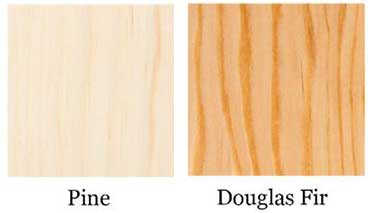 When comparing Douglas Fir to Redwood and Cedar, some distinct differences and similarities emerge. Let’s consider each species:
When comparing Douglas Fir to Redwood and Cedar, some distinct differences and similarities emerge. Let’s consider each species:
- Douglas Fir: Known for its high strength-to-weight ratio, making it an excellent choice for structural applications. While its resistance to decay is moderate, it can be increased with the appropriate treatment.
- Redwood: Offers superior resistance to decay and insects compared to Douglas Fir. However, its cost can be considerably higher, especially for high-quality heartwood.
- Cedar: Like Redwood, Cedar boasts excellent resistance to decay and insects and has a pleasing natural aroma. Yet, its strength is less than Douglas Fir’s, making it less suitable for structural applications.
| Douglas Fir | Redwood | Cedar | |
|---|---|---|---|
| Decay Resistance | Moderate | High | High |
| Strength | High | Medium | Medium |
| Cost | Lower | Higher | Higher |
 Similarly, when considering Pine (specifically Southern Yellow Pine), Spruce, and White Fir:
Similarly, when considering Pine (specifically Southern Yellow Pine), Spruce, and White Fir:
- Pine (Southern Yellow Pine): Possesses high strength and durability but has relatively lower resistance to rot. These properties can be improved significantly with proper treatment.
- Spruce: Spruce offers lower resistance to rot than Pine but has a light color and fine texture that makes it ideal for indoor furniture.
- White Fir: While it has lower strength than Pine, White Fir has good rot resistance and is a light color often preferred for interior applications.
| Pine (Southern Yellow) | Spruce | White Fir | |
|---|---|---|---|
| Decay Resistance | Lower | Lower | Moderate |
| Strength | High | Medium | Medium |
| Indoor Use | Good with treatment | Excellent | Excellent |
Choosing the right type of wood for your project depends on the project’s location (indoor or outdoor), the required strength and durability, resistance to decay, and, of course, your budget.
For example, if you’re working on an outdoor project that requires high strength and durability, like a deck or a pergola, Douglas Fir can be an excellent choice, especially when cost is a consideration. But if decay resistance is a priority, Redwood or Cedar may be worth the investment.
In contrast, for indoor projects like furniture or cabinets, Pine, especially Southern Yellow Pine, can provide strength at a reasonable cost, while Spruce or White Fir can offer a pleasing aesthetic due to their light color and fine texture.
In all cases, appropriately treating the wood can significantly enhance its performance and lifespan.
Always remember to research thoroughly, compare options, and choose the wood that best fits the specific needs of your project.
Cost and Availability
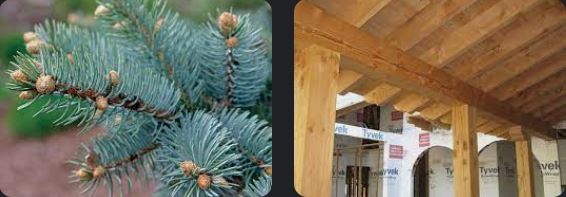 The cost of Douglas Fir can vary significantly depending on factors such as the grade of the wood, the source, and the region. Higher grades of Douglas Fir, which have fewer knots and imperfections, can command higher prices. Similarly, wood harvested from sustainably managed forests may carry a premium due to its environmental credentials.
The cost of Douglas Fir can vary significantly depending on factors such as the grade of the wood, the source, and the region. Higher grades of Douglas Fir, which have fewer knots and imperfections, can command higher prices. Similarly, wood harvested from sustainably managed forests may carry a premium due to its environmental credentials.
On average, the cost of Douglas Fir lumber should range between $5 and $7 per linear foot for standard grades. It’s important to note that prices are subject to change due to market conditions and availability.
| Grade | Cost (per linear foot) |
|---|---|
| Lower Grade | $5 |
| Standard Grade | $6 |
| Higher Grade | $7 |
Similar to Douglas Fir, the cost of Pine, and Southern Yellow Pine in particular, is influenced by factors such as the grade of the wood, where it’s sourced, and the region. Generally, Pine is a less expensive option than other types of wood, easily making it a popular choice for many projects.
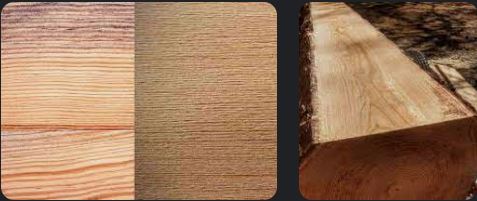 For Southern Yellow Pine, costs can range between $2 and $4 per linear foot for standard grades. It, again, is subject to market conditions and may vary across different regions.
For Southern Yellow Pine, costs can range between $2 and $4 per linear foot for standard grades. It, again, is subject to market conditions and may vary across different regions.
| Grade | Cost (per linear foot) |
|---|---|
| Lower Grade | $2 |
| Standard Grade | $3 |
| Higher Grade | $4 |
When we compare Douglas Fir and Pine, particularly Southern Yellow Pine, there is a noticeable difference in cost. As previously discussed, Douglas Fir generally costs between $5 and $7 per linear foot, while Southern Yellow Pine ranges between $2 and $4 per linear foot.
The availability of both kinds of wood is generally good, as they are both widely grown and harvested. However, Douglas Fir is primarily sourced from the Pacific Northwest of the United States, whereas Southern Yellow Pine is predominantly found in the Southeastern United States. It means availability and prices may vary depending on your geographical location.
| Wood Type | Cost Range (per linear foot) | Availability |
|---|---|---|
| Douglas Fir | $5 – $7 | Good, depending on region |
| Pine (Southern Yellow) | $2 – $4 | Good, depending on region |
These are average costs and can fluctuate based on the factors previously mentioned. When considering a project, it’s always beneficial to research current market prices in your local area and check multiple sources to ensure you are getting the best quality for your budget.
Sourcing and Sustainability
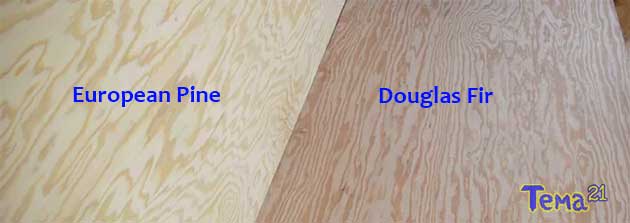 When sourcing Douglas Fir, it is crucial to consider its origin and how it has been harvested. Wood sourced from sustainable forestry operations is preferable, contributing to a positive environmental impact and ensuring a continued supply of this valuable resource. Look for Douglas Fir, certified by organizations such as the Forest Stewardship Council (FSC) or the Sustainable Forestry Initiative (SFI).
When sourcing Douglas Fir, it is crucial to consider its origin and how it has been harvested. Wood sourced from sustainable forestry operations is preferable, contributing to a positive environmental impact and ensuring a continued supply of this valuable resource. Look for Douglas Fir, certified by organizations such as the Forest Stewardship Council (FSC) or the Sustainable Forestry Initiative (SFI).
Renowned companies such as Weyerhaeuser and Georgia-Pacific provide Douglas Fir that has been responsibly harvested and certified by the FSC or SFI. These companies demonstrate their commitment to sustainable forestry practices and offer reliable sourcing for Douglas Fir.
| Company | Certification |
|---|---|
| Weyerhaeuser | FSC, SFI |
| Georgia-Pacific | FSC, SFI |
Sourcing Pine, specifically Southern Yellow Pine, requires similar diligence. Look for Pine certified by the FSC or SFI, indicating that the wood has been harvested sustainably.
Companies like Canfor and Interfor are well-known providers of Pine and maintain certifications from FSC and SFI, signifying their commitment to sustainable forestry. Consumers can support responsible forest management and sustainable practices by choosing products from these companies.
| Company | Certification |
|---|---|
| Canfor | FSC, SFI |
| Interfor | FSC, SFI |
Choosing between Douglas Fir and Pine goes beyond comparing their physical properties, costs, and availabilities. An equally significant factor is the sustainability and responsible sourcing of these woods.
As the demand for wood brutally continues to grow, it is crucial to ensure that forestry practices are sustainable and do not cause undue harm to ecosystems. Choosing wood certified by respected organizations such as FSC or SFI can give you confidence that you are making an environmentally responsible choice.
Douglas Fir and Pine can be sustainably sourced, and numerous companies ensure they follow best practices for sustainable forestry. By prioritizing these sources, you can contribute to responsible forestry and the long-term sustainability of these valuable resources. Ultimately, the choice between Douglas Fir and Pine depends on your specific needs, but whichever you choose, make sure it’s sourced responsibly.
References:
- Understanding Wood: A Craftsman’s Guide to Wood Technology by R. Bruce Hoadley
- Wood! Identifying and Using Hundreds of Woods Worldwide by Eric Meier
- Woodworking Basics: Mastering the Essentials of Craftsmanship by Peter Korn

Marta Savova is a journalist, health, technolgy and science writer. With over 20 years of experience in the field, she has published numerous research papers and articles and has a passion for sharing his knowledge with others. He is a regular contributor to several media.
